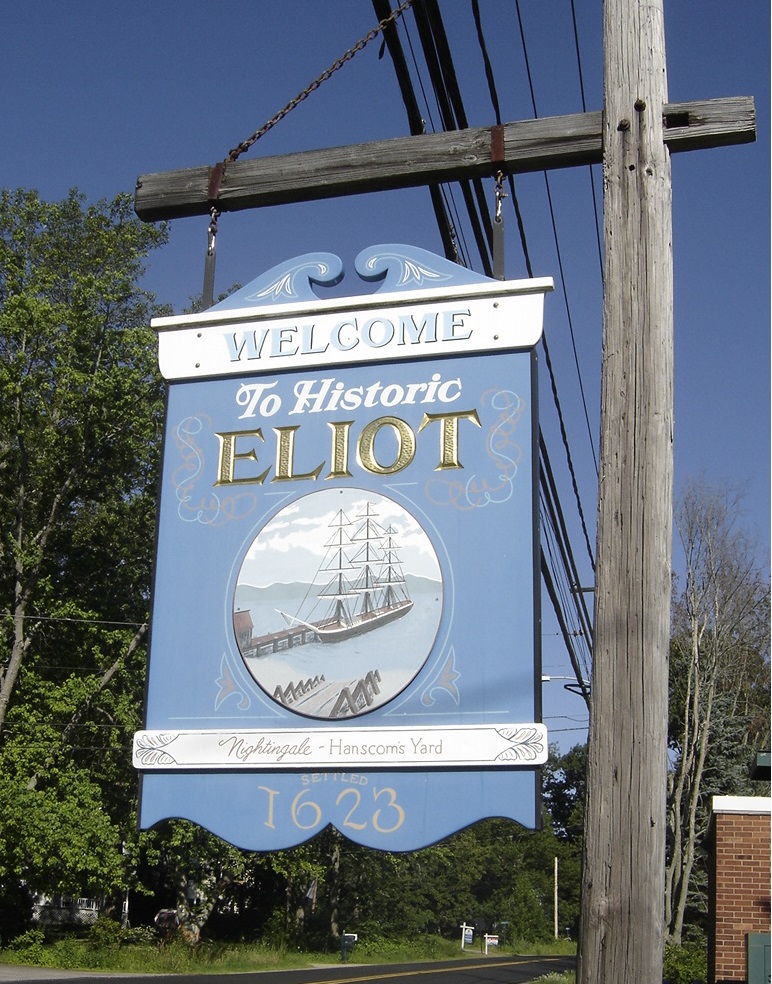So when was Kittery settled? Kittery was incorporated as a town in 1647. But first settlement can occur before incorporation. What do the records say?
Everyone knows or should know that New Hampshire was first settled in 1623. There are competing claims as to whether Portsmouth or, more specifically, modern Rye can claim the first settlement, or Dover. Although there are compelling arguments that Edward Hilton arrived at Dover Point much later than 1623. I will mostly stay out of those controversies for now. But what was happening on the Maine side of the Piscataqua River at this time? The only thing that was happening was Abenaki life.
Corn. The Abenaki were experts at growing corn, and it didn't take long for the Hiltons to see that the Abenaki had already planted cornfields on the Eliot side of the river. In fact William Hilton was growing corn in a field on the Eliot side of the river by 1630, at the location where Sandy Hill Farm is now located on River Road. In 1632 Captain Walter Neale acting on behalf of Sir Ferdinando Gorges discovered William Hilton's cornfield and buildings on the Eliot side of the river and promptly destroyed the buildings and chased Hilton off the lands. William Hilton was squatting on these lands that ultimately belonged to Sir Ferdinando Gorges after he and Captain John Mason divided their grants in 1629, with Mason getting all lands in what would become New Hampshire, and Gorges getting the Maine side of the Piscataqua. Gorges then granted large blocks of land to his loyal agents including Thomas Cammock who received the lands where Hilton planted his corn in 1633. Was the fact that William Hilton was planting corn in modern-day Eliot a sign that Eliot was "settled"? My personal take on this is that this was a corn field, and perhaps outbuildings to store tools and maybe a place to get out of a sudden storm. William Hilton had a wife and small children in 1630. I find it hard to believe that they would live all alone on the Maine side of the river when a thriving and growing settlement existed across the river at Dover (Hilton's) Point where his brother's family lived. In any case whatever was happening on these lands ceased in 1632.
 |
| Gorges Deed to Cammock |
Did Thomas Cammock then settle on this land in 1633? By that time Cammock already had a large grant of land at Black Point in modern-day Scarborough and would end up settling on that grant until the end of his life. In fact he sold his Piscataqua grant to John Trewogy on behalf of Alexander Shapleigh in January 1636 so it doesn't appear that Cammock was interested in settling on these lands where Hilton planted his corn.
A little south of these lands was the grant of Thomas Wannerton. Wannerton, in 1634 or 1635, invited his friend Nicholas Frost to come join him and live on a part of his land which Nicholas Frost promptly did. This implies that Thomas Wannerton was already living on his land in 1634 or 1635 and was soon joined by his friend Nicholas Frost. The only way we know that the year was 1634 or 1635 is from a deposition given in 1673 by Phillip Swadden who testified to knowing that Wannerton gave the land to Frost "about thyrty eight or thyrty nine years since" as no official deed was ever recorded for that land transfer.
After these original three 1633 grants to Cammock, Wannerton, and Henry Josselyn, more settlers came and the area which is now Eliot was truly settled. So as far as when Eliot was "settled"? I personally like the 1633 date. That is when the ball really started rolling with settlement. If we took a time machine back to 1633 we might encounter somebody living on these earliest grants, but I think by 1634 we definitely would encounter settlers here. I have seen no evidence of any sort of settlement on the Maine side of the Piscataqua in 1623. So maybe after we let Portsmouth and Dover have their 400th fun in 2023, we can come along 10 years later and have our own fun.








No comments:
Post a Comment